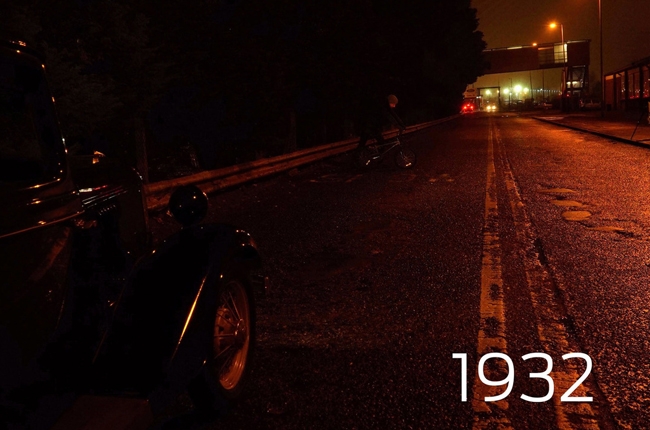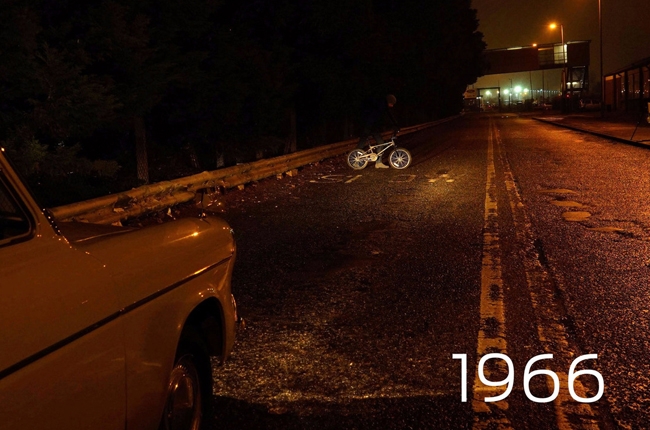
From dim gas lamps to bright Xenon/LED beams, headlight technology has come a long way since the early ages of the automotive industry. To highlight this, Ford Motor Company released a photo series showing the difference between headlights from more than 100 years ago to present time.
The series of images show the different lighting capabilities of the Ford vehicles such as the 1908 Model T, 1932 Model Y, 1966 Anglia 105e, 1976 Fiesta, 1994 Mondeo, and 2016 Mustang. Each vehicle is tasked to light up a cyclist 12 meters away using its headlights or lamps in the case of the Model T.
The difference is fascinating; the Model T’s manually lit up acetylene lamps could barely illuminate the road ahead, moreso the cyclist. On the other hand, the Mustang’s Xenon headlights light up the cyclist and its immediate surroundings (talk about technological advancements).
We have gone from what were essentially glorified candles to efficient and effective xenon and LED lights. In the future we’ll see more super-bright LED lights equipped to cars, which can actually help drivers remain alert. Visibility at night is now so much better. Like night and day,” said Ford light research engineer Michael Koherr.
Today, more and more vehicles are being fitted with LED headlights to better illuminate the road ahead. According to Ford, these types of lights have around 3 times more output compared to halogen bulbs, which were invented in the 1900s.
But Ford doesn’t want to stop there. According to Koherr, the American brand is developing new spot lighting technology. This will make use of infra-red cameras to help driver's spot objects in the vehicle's path, such as people or animals, up to 120 meters away.
Latest News
-
The 7th-gen Ford Mustang: What to expect? / News
The 7th-gen Mustang has arrived in the Philippines, take a look at the changes Ford has brought to its iconic pony car.
-
No E-Way! E-Bikes and E-Trikes banned on major roads in Metro Manila / News
The MMDA is now enforcing a new ban on e-bikes and e-trikes on several roads in Metro Manila to help improve traffic flow and improve road safety.
-
New Alfa Romeo Junior is ready to charge up the EV scene in Europe / News
The Alfa Romeo Junior has been unveiled, marking the Italian automaker's entry into the all-electric vehicle segment.
Popular Articles
-
Cheapest cars under P700,000 in the Philippines
Aug 25, 2023
-
First car or next car, the Ford EcoSport is a tough package to beat
Jun 18, 2021
-
Car Maintenance checklist and guide – here’s everything you need to know
Earl Lee · Jan 12, 2021
-
Most fuel efficient family cars in the Philippines
Bryan Aaron Rivera · Nov 27, 2020
-
2021 Geely Okavango — Everything you need to know
Joey Deriquito · Nov 19, 2020
-
Family cars in the Philippines with the biggest trunks
Sep 20, 2023
-
Head to head: Toyota Rush vs. Suzuki XL7
Joey Deriquito · Oct 28, 2020
-
Why oil changes are important for your car
Earl Lee · Nov 10, 2020
-
2021 Kia Stonic — What you need to know about it
Joey Deriquito · Oct 16, 2020
-
Top 7 tips for buying a used car in the Philippines
Joey Deriquito · Nov 26, 2020






